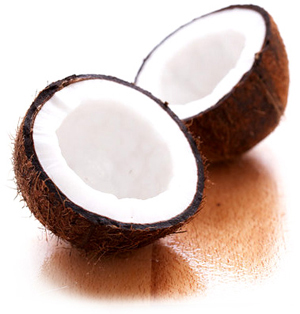Store bought coconut milk can be very expensive. Whether you’re using coconut as an ingredient in an exotic recipe, or you’re just seeking a dairy free milk to drink, it can get pretty pricey to keep buying those cans of coconut milk.
Not only am I on a gluten free diet, I’m also trying to use as little dairy as possible, as I’ve noticed it gives me stomach issues, so I’m always on the lookout for dairy free milks to use, and so far, I’ve had good success making
chickpea milk and
sesame milk, but sometimes I don’t feel like putting in as much effort as chickpea milk requires to make it, and sometimes the taste of sesame isn’t what I want in a certain recipe. Its times like this that I pull out my coconut and make coconut milk for my family.
Making coconut milk from shredded coconut is much cheaper than buying ready made coconut milk, and its easy as pie. If you bulk buy coconut, as I do, it is even cheaper to make, perhaps even as cheap as regular milk, depending on the prices in your area.
In case you were wondering about the nutrition facts of coconut milk, a cup of coconut milk has 5 grams of protein, as opposed to the 8 grams of protein in a cup of whole cow’s milk. It also contains 41% of the recommended daily amount of iron, and 4% of the amount of calcium. (Whole milk, in comparison, has 0% iron and 28% calcium.) It is also filled with many, many,
many vitamins and minerals, and on top of that, has
many other health benefits as well.
So, how do you make homemade coconut milk?
Easy.
Here’s how.
Homemade Coconut Milk Instructions
1. Fill a bowl partway with dried (untoasted) coconut. I use desicated coconut, but shredded coconut works just as well.
2. Pour enough boiling water onto the coconut to moisten the whole thing, and then a little more to ensure all the coconut is covered by the water.
3. Let the coconut and water mixture sit for approximately half an hour.
4. Put a colander in a bowl and line it with a cheesecloth. Pour the coconut and water mixture into the cheesecloth and strain out the liquid.
5. Once the majority of the liquid has strained out of the coconut, grab the edges of the cheesecloth and bring them together to form a little sack with the coconut inside. Twist the end tightly, and squeeze out any coconut milk left in the cheesecloth. This will feel rather oily, as you’re getting the coconut cream out of the coconut in addition to the milk.
6. Voila- your coconut milk! Use it in any recipe that calls for coconut milk, or in recipes that call for milk that wouldn’t taste bad with a coconut flavor addition.
7. Store in the refrigerator. Note that when chilled, the fat of the coconut will rise to the top into a solid mass. This is the coconut cream, and you can either remove it, or heat up the coconut milk before use to incorporate it into the mixture.
8. Hey wait- don’t throw out that coconut pulp! We’ll be using it in plenty of recipes, number one, to make coconut flour. But that’s for another post.
Do you ever use coconut milk? Do you usually buy it or make it yourself?
When you need a milk substitute for whatever reason, what type of milk do you usually use? Have you ever made any milk substitutes before? If so, which type?
Linking up to Simple Lives Thursday, Pennywise Platter Thursday, Food Trip Friday, Fresh Bites Friday, Fresh Food Friday, Wellness Weekend, Fight Back Friday, Friday Foods, Allergy Friendly Friday, Homestead Blog Hop, Monday Mania, Monday Mangia, Melt in Your Mouth Monday, Hearth and Soul Blog Hop, Fat Tuesday, Real Food Wednesday,










